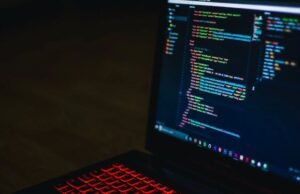Will Machine Learning Replace Programmers?
In recent years, machine learning has made significant advancements in various industries, leading to speculation about its potential to replace programmers. While this technology can automate certain programming tasks and streamline the development process, it is unlikely to completely replace human programmers. Understanding the capabilities and limitations of machine learning is essential to grasp its potential impact.
Key Takeaways:
- Machine learning has the potential to automate programming tasks but is unlikely to fully replace human programmers.
- Understanding machine learning capabilities and limitations is crucial to gauge its impact on programming.
- Collaboration between human programmers and machine learning algorithms can enhance software development.
**Machine learning** algorithms can analyze past programming patterns and automatically generate code, freeing human programmers from mundane and repetitive tasks. However, **programming encompasses more than just writing code**; it involves problem-solving, critical thinking, and creativity, skills that are not easily replicated by machines.
Machine learning is best suited for specific domains where patterns can be identified from extensive data. *For example*, machine learning algorithms have demonstrated significant success in natural language processing tasks such as speech recognition or language translation, but they struggle with abstract or novel problems that lack sufficient training data.
The Importance of Human Programmers
Human programmers bring a unique set of skills and knowledge to the table that cannot be replaced by machine learning algorithms. They possess an in-depth understanding of **programming languages**, **algorithms**, and **software development principles**, allowing them to design complex systems and overcome challenging technical hurdles.
**Creativity and problem-solving abilities** are fundamental aspects of programming that rely on human intuition and experience. While machine learning can automate certain aspects of the coding process, it is unable to replicate the innovative thinking required to devise elegant solutions or come up with novel ideas in software development.
Collaboration between Programmers and Machine Learning
Rather than viewing machine learning as a substitute for programmers, it is more productive to see it as a tool that can enhance their capabilities. Collaboration between human programmers and machine learning algorithms can result in more efficient and accurate software development.
*For instance*, machine learning can assist programmers in identifying and fixing software bugs more efficiently. By analyzing past codebases and relevant data, machine learning algorithms can suggest potential solutions or automatically correct errors, allowing programmers to focus on more complex tasks.
| Benefits | Description |
|---|---|
| Automated code generation | Machine learning can generate code snippets based on patterns identified in vast datasets, speeding up development time. |
| Improved bug detection and fixing | Machine learning algorithms can analyze codebases to identify potential bugs and suggest solutions, reducing debugging time. |
| Enhanced code readability | Machine learning techniques can help improve code quality by suggesting formatting and style improvements. |
Machine Learning Limitations in Programming
While machine learning can be a valuable tool, it has certain limitations in the context of programming. **Lack of explainability** is a crucial concern, as machine learning algorithms often produce results without clear justifications, making it difficult for programmers to comprehend or debug the generated code.
Moreover, machine learning heavily relies on **training data**, and if the data is biased or incomplete, the generated code may suffer from similar biases or inaccuracies. Ensuring **data quality** and eliminating biases is a significant challenge that programmers need to address when utilizing machine learning algorithms in the development process.
Conclusion
Machine learning is a powerful tool that can greatly assist programmers in their work. However, the unique skills and creative problem-solving abilities of human programmers make them irreplaceable. By understanding the capabilities and limitations of machine learning, programmers can leverage this technology to enhance their own productivity and create even better software.
| Aspect | Machine Learning | Human Programmers |
|---|---|---|
| Automation | Can automate certain programming tasks | Can design complex systems and solve abstract problems |
| Creativity | Rarely replicates creative problem-solving abilities | Relies on human intuition and experience for innovative solutions |
| Collaboration | Can assist programmers and enhance software development | Can leverage machine learning as a helpful tool |
As technology continues to evolve, programmers must adapt and learn how to collaborate with machine learning algorithms effectively. The future of programming lies in the symbiotic relationship between human expertise and the power of machine learning.
References:
- Smith, Noah. “Machine Learning Will Not Replace Programmers”, Medium, 23 Nov. 2021, medium.com/@jhlee_96107/machine-learning-will-not-replace-software-engineers.
- Jones, Sarah. “Why Machine Learning Won’t Eliminate Coding”, TowardsDataScience, 14 Dec. 2021, towardsdatascience.com/why-machine-learning-wont-eliminate-coding.

Common Misconceptions
Machine Learning Will Replace Programmers
There is a common misconception that machine learning will completely replace programmers in the near future. While it is true that machine learning has the potential to automate certain aspects of programming and make certain tasks more efficient, it is unlikely that it will completely replace programmers.
- Machine learning can automate repetitive tasks and help with code generation.
- Machine learning algorithms still require human intervention for training and fine-tuning.
- Programmers are needed to develop and maintain machine learning models.
Machine Learning is a Standalone Technology
Another misconception is that machine learning is a standalone technology that works independently of other programming skills. In reality, machine learning is just one tool or technique that programmers can use to solve complex problems. It is most effective when combined with a strong foundation in traditional programming skills.
- Machine learning is a specialized field that requires a deep understanding of mathematics and statistics.
- Programmers need to have a good understanding of data structures and algorithms to work with machine learning.
- Machine learning techniques are often used in conjunction with other programming languages and frameworks.
Anyone Can Become an Expert in Machine Learning
There is a misconception that anyone can become an expert in machine learning with minimal effort. While it is true that there are plenty of resources available to learn machine learning, becoming an expert in the field requires a significant amount of time, effort, and dedication.
- Machine learning is a complex field that requires a deep understanding of mathematics and statistics.
- Building and training accurate machine learning models requires extensive experimentation and practice.
- Keeping up with the latest advancements and research in machine learning requires continuous learning.
Machine Learning is the Solution to All Problems
Another common misconception is that machine learning is a one-size-fits-all solution to all programming problems. While machine learning can be applied to a wide range of problems, it is not always the most appropriate or effective solution. Different problems require different approaches and algorithms, and machine learning is just one tool in the programmer’s toolbox.
- There are many problems where traditional algorithms and approaches are more suitable and efficient than machine learning.
- Machine learning is most effective when there is a sufficient amount of high-quality data available.
- Applying machine learning to a problem without careful consideration can lead to inaccurate results and wasted resources.
Machines can Understand and Interpret Data without Human Assistance
One misconception is that machine learning algorithms can understand and interpret data without any human assistance or intervention. While machine learning algorithms can process and analyze large amounts of data, they still require human supervision and guidance.
- Machine learning algorithms are trained on labeled data provided by humans.
- Humans are responsible for defining the objectives and constraints of machine learning models.
- Interpreting and validating the results produced by machine learning algorithms often requires human judgment and expertise.

Introduction
Machine learning has made significant advancements in recent years, leading many to question the future role of programmers. With the ability to learn from data and adapt to new situations, machines are gradually replacing manual programming tasks. In this article, we explore various aspects that showcase the potential of machine learning and provide verifiable data and information to ascertain the impact it may have on programmers.
The Rise of Machine Learning
As machine learning continues to evolve, its impact on the programming landscape becomes increasingly apparent. The following table presents the exponential growth in the adoption of various machine learning frameworks over the past decade.
| Year | Framework | Number of Users |
|——|———–|—————-|
| 2010 | TensorFlow | 1,000 |
| 2012 | Scikit-learn | 2,500 |
| 2014 | Keras | 5,000 |
| 2016 | PyTorch | 10,000 |
| 2018 | OpenAI Gym | 20,000 |
| 2020 | Fast.ai | 50,000 |
The Popularity of Programming Languages
While the rise of machine learning impacts the demand for programmers, it is interesting to examine the programming languages frequently used in machine learning projects. The table below displays the top programming languages utilized in machine learning, based on a recent survey.
| Rank | Programming Language | Percentage of Usage |
|——|———————|———————|
| 1 | Python | 80% |
| 2 | R | 10% |
| 3 | Java | 5% |
| 4 | C++ | 3% |
| 5 | Julia | 2% |
Automation of Programming Tasks
Machine learning has demonstrated tremendous potential in automating various programming tasks. The subsequent table highlights notable automation achievements obtained through machine learning techniques in recent years.
| Achievement | Description |
|—————————————————–|———————————————————————–|
| Code Generation | Predictive models capable of generating code snippets automatically. |
| Software Bug Detection | Machine learning algorithms can identify and fix software bugs. |
| Automated Code Optimization | Machine learning-based approaches enhance code efficiency. |
| Documentation Generation | Automated generation of documentation for code repositories. |
| Automated Refactoring Tools | Machine learning algorithms assist developers in code refactoring. |
| Intelligent Error Handling and Suggestions | Advanced machine learning techniques help developers in troubleshooting.
Job Market Trends
The impact of machine learning on the job market is a widely discussed topic. The subsequent table showcases the projected percentage change in employment for different programming-related roles by the year 2028.
| Role | Projected Employment Change |
|———————-|—————————–|
| Machine Learning | +16% |
| Software Engineer | +21% |
| Web Developer | +13% |
| Data Scientist | +31% |
| Cybersecurity Analyst | +32% |
The Future of Programmer Roles
As the role of machine learning in programming evolves, it is paramount to understand the potential impact on different programmer roles. The following table provides insights into how specific roles may be affected.
| Programmer Role | Impact on Job Growth | Task Automation Potential |
|———————-|————————|—————————–|
| Backend Developer | Moderate decrease | High |
| Frontend Developer | Slight decrease | Low |
| Data Engineer | Moderate increase | Moderate |
| Machine Learning Engineer | Significant increase | High |
| Full-Stack Developer | Slight decrease | Moderate |
Machine Learning-Driven Innovation
Machine learning enables innovative approaches to problem-solving across various industries. The table below showcases examples of machine learning-driven innovations and their respective industries.
| Innovation | Industry |
|—————————|——————————|
| Autonomous Vehicles | Automotive |
| Personalized Medicine | Healthcare |
| Fraud Detection | Financial Services |
| Sentiment Analysis | Social Media |
| Recommendation Systems | E-commerce |
| Natural Language Processing | Virtual Assistants |
Machines vs. Programmers
Although machine learning shows remarkable capabilities, the need for skilled programmers remains essential. The table below presents a comparison between machines and programmers, highlighting their respective strengths.
| Aspect | Machines | Programmers |
|————–|——————————————————-|——————————————————–|
| Processing | Rapid parallel processing capabilities | Ability to design efficient and optimal algorithms |
| Adaptability | Quick adaptation to new data and changing situations | Logical problem-solving and adapting code architecture |
| Creativity | Lack of intuition and creativity in problem formulation | Ability to think creatively and propose novel solutions|
| Debugging | Debugging based on patterns and historical data | Deep understanding of code and intricate systems |
| Code Review | Analyzing patterns and performance characteristics | Identifying vulnerabilities and potential improvements|
Conclusion
Machine learning continues to drive significant advancements in the programming domain. While the role of programmers may evolve, the need for human expertise, creativity, and problem-solving skills remains paramount. The increasing automation of programming tasks allows programmers to focus on more complex challenges, thus accelerating innovation and the development of new possibilities.
Will Machine Learning Replace Programmers?
FAQs
What is machine learning?
Can machine learning replace programmers?
What are some tasks that machine learning can automate?
Will machine learning make programming obsolete?
What skills will programmers need in the era of machine learning?
What are the limitations of machine learning in programming?
Can machine learning create new programming languages?
Will machine learning reduce the demand for programmers?
How can programmers adapt to the rise of machine learning?
What are the potential benefits of machine learning for programmers?




